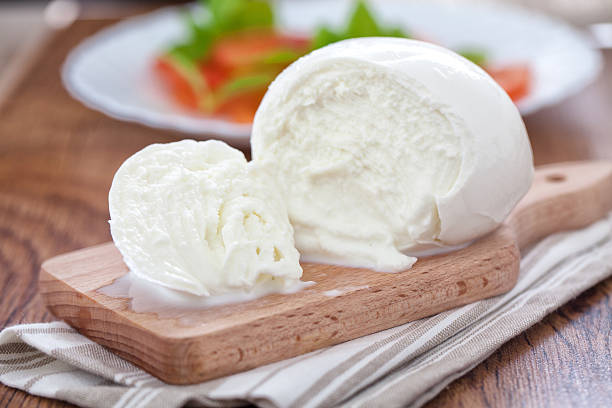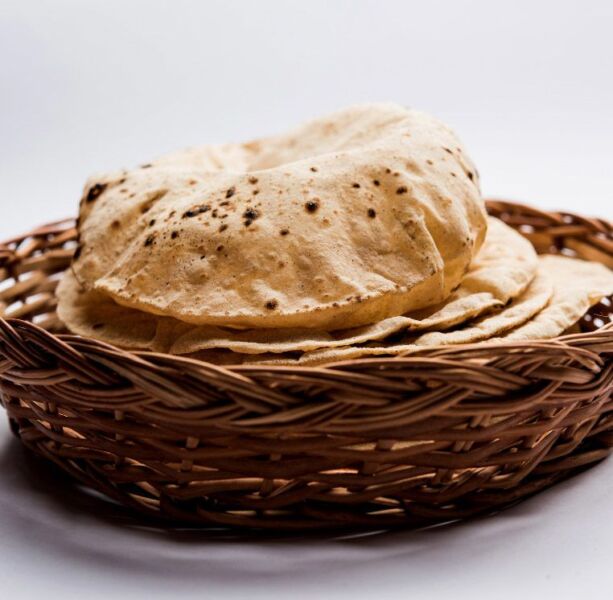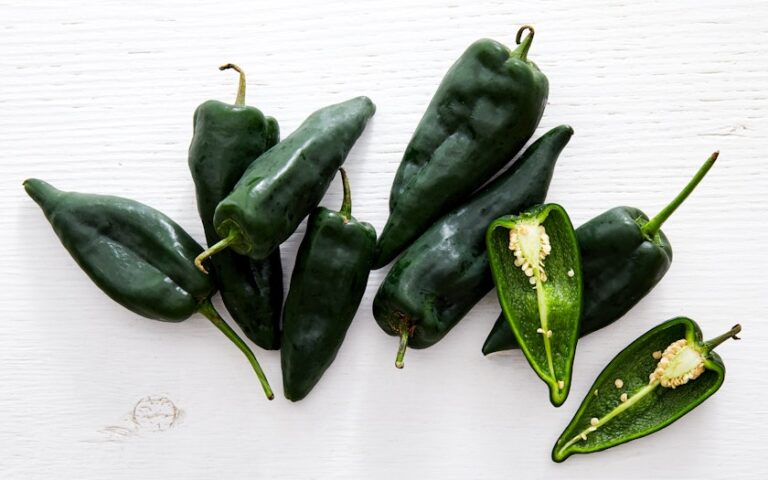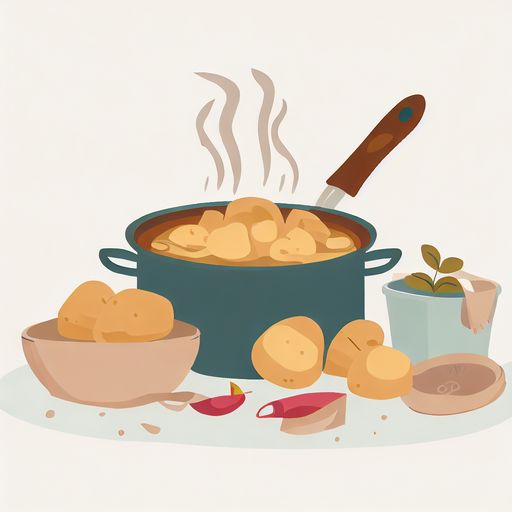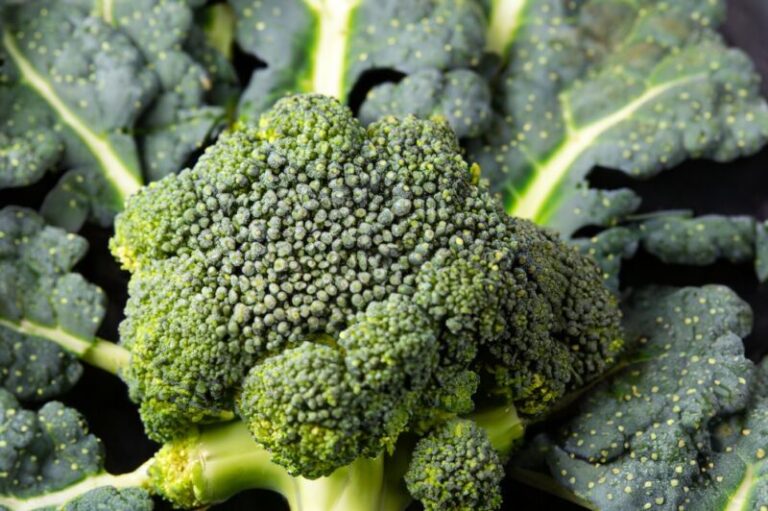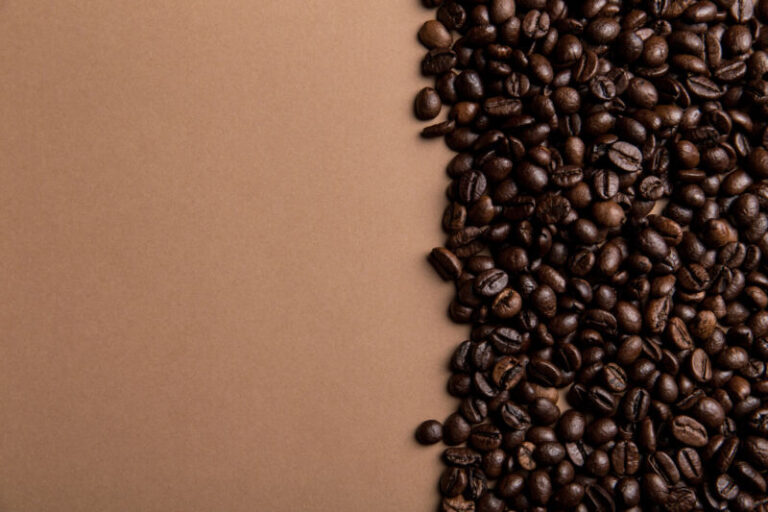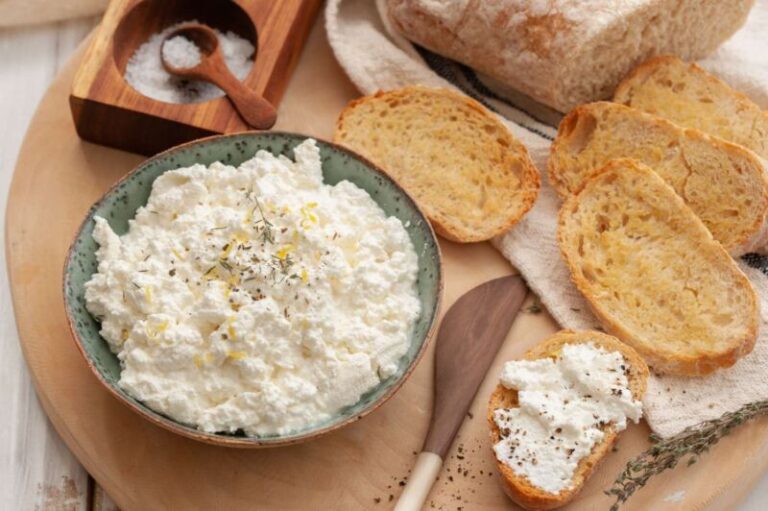Blue Mold on Mozzarella Cheese: A Guide to Identification, Health Risks, and Prevention
Finding blue mold on your fresh mozzarella cheese can be alarming. The fuzzy blue-green growth certainly doesn’t look very appetizing. Should you simply cut off the moldy parts and still eat the cheese? Or is it safer to discard the entire thing?
Mold on cheese is quite common, as the high moisture content provides ideal conditions for mold to grow. However, some molds can pose health risks, so it’s important to understand how to identify, handle, and prevent mold on soft cheeses like mozzarella.
In this article, I’ll cover everything you need to know about dealing with blue mold on mozzarella cheese. I’ll discuss how to identify mold, the potential health risks, what to do if you’ve eaten moldy mozzarella, and how to prevent mold growth and handle mold contamination safely.
What Is Mold and Why Does It Grow on Cheese?
First, let’s start with the basics – what is mold exactly?
Mold is a type of microscopic fungus that produces spores that spread easily through the air. There are thousands of mold species, and they can be found just about everywhere – both indoors and outdoors.
When mold spores land on a moist food source, like cheese, they germinate and begin growing, breaking down the food to survive. As mold grows, it produces new spores that spread and create more mold colonies.
Cheese provides the ideal environment for mold growth. It has a high moisture content and nutrients that mold needs to thrive. Mold growth can occur at both cold refrigerator temperatures and room temperature.
Different environmental factors encourage mold growth on cheese:
- Humidity: High humidity provides moisture that helps mold spread.
- Warmth: Mold grows quickest at warmer temperatures between 40-100°F.
- pH levels: Mold prefers acidic environments, and many cheeses have a low pH.
- Exposure to air: Oxygen allows mold to respire and grow. Lack of sealing exposes cheese to air.
- Contamination: Unclean surfaces, equipment, or hands can transfer mold spores to cheese.
Understanding these factors is key to controlling mold growth, which I’ll discuss more later. First, let’s look at identifying different types of mold on cheese.
Common Types of Mold Found on Cheese
Many types of mold can grow on cheese. The most common molds found on cheese include:
White Mold
- Appearance: Fluffy and cottony white growth
- Cheeses affected: Brie, camembert, chevre
- Usual cause: Penicillium candidum or Penicillium camemberti molds
- Safety: Usually harmless when consumed in small amounts
Blue Mold
- Appearance: Blue, blue-green, or green growth with a velvety texture
- Cheeses affected: Gorgonzola, stilton, roquefort
- Usual cause: Penicillium roqueforti mold used for blue veining
- Safety: Considered safe when used intentionally in cheesemaking
Gray Mold
- Appearance: Fuzzy grayish surface growth
- Cheeses affected: Hard and semi-soft cheeses
- Usual cause: Rhizopus or Mucor mold species
- Safety: Can cause food spoilage and allergic reactions
Pink Mold
- Appearance: Pink, reddish, or orange fuzzy growth
- Cheeses affected: Soft cheeses with a high moisture content
- Usual cause: Neurospora species of mold
- Safety: Associated with dairy product spoilage
Black Mold
- Appearance: Black velvety dots or powdery growth
- Cheeses affected: Hard and semi-soft cheeses
- Usual cause: Aspergillus, Cladosporium, or other dark pigmented molds
- Safety: Some species can produce mycotoxins causing severe reactions
As you can see, mold comes in many colors and affects all types of cheese. The color and type of mold provide clues about its source and potential risks. Next, let’s focus specifically on identifying blue mold on mozzarella cheese.
How to Identify Blue Mold on Mozzarella Cheese
Fresh mozzarella is a soft, moist cheese, making it very prone to mold growth. Of the various mold types, blue mold is one you may commonly encounter on mozzarella. Here’s how to spot it:
- Color: Blue, blue-green, greenish hue
- Texture: Velvety, fuzzy, or powdery
- Shape: Can appear as small dots, spots, or large patches
- Odor: An earthy smell, different from the cheese odor
- Taste: A tangy, bitter flavor unlike the mild cheese
The color is the biggest visual indicator of blue mold, ranging from a blue-green hue to a darker forest green. It will have a distinctive velvety or fuzzy texture.
You may notice small dots or spots first, which can eventually grow into large blotchy patches if left unchecked. The mold will create a musty, damp smell and bitter taste unlike the usual mild, creamy mozzarella flavor.
Trust your senses when inspecting mozzarella cheese. Any odd colors, textures, odors, or tastes may indicate mold growth. Next, let’s discuss the potential health risks from consuming moldy mozzarella.
What Happens If You Eat Blue Mold on Mozzarella Cheese?
Now we come to the important question – what can happen if you eat blue mold on mozzarella cheese?
First, it’s crucial to note that not all mold is unsafe to eat. For many mold varieties, consuming a small amount of mold is unlikely to cause illness.
However, mold can present some health risks in certain situations:
Allergic Reactions
Some people may be allergic to certain molds. Symptoms of mold allergy can include rash, watery eyes, runny nose, coughing, and chest tightness.
With blue mold allergy, symptoms are often more severe and may involve shortness of breath, wheezing, and extreme difficulty breathing.
Food Poisoning
Eating large amounts of mold can lead to food poisoning. Symptoms usually appear within a few hours or up to 2 days after ingesting and include nausea, vomiting, diarrhea, and stomach cramps.
Food poisoning from blue mold is less common but can potentially occur. Extreme cases may require hospitalization to treat dehydration.
Toxic Mold Species
While rare, certain toxic mold species pose severe health risks if large amounts of the mold are consumed. These include the molds that produce mycotoxins and aflatoxins.
Toxic black mold is more common on hard cheeses. Blue mold toxicity is uncommon but possible depending on the exact species.
Weakened Immune System
Eating mold regularly can potentially lead to a weakened immune system over time, making you more prone to illnesses. Very young children, elderly, pregnant women, and those with compromised immunity are most at risk.
With blue mold, weakened immunity is unlikely in healthy adults eating small amounts. But those with vulnerable immune systems should take extra precautions.
The bottom line is that a small amount of blue mold on mozzarella is unlikely to make most healthy adults ill. But for those with allergies or weakened immunity, it poses higher risks that warrant extra caution.
Next, let’s discuss what to do if you’ve actually eaten some moldy mozzarella.
What To Do If You’ve Eaten Moldy Mozzarella Cheese
So you took a bite of that fresh mozzarella and realized afterward it had some fuzzy blue mold. What should you do at this point? Here are some recommendations:
- Stop eating the cheese immediately. inspect the remainder and discard any moldy parts. Clean any utensils and surfaces touched by the moldy cheese.
- Drink extra fluids like water over the next day. This can help flush out any foodborne illnesses and prevent dehydration if vomiting or diarrhea occurs. Avoid alcohol and caffeinated beverages as these can worsen dehydration.
- Monitor yourself carefully over the next 48 hours for any symptoms like nausea, stomach cramps, vomiting, diarrhea, cough, or wheezing. Symptoms of severe allergic reaction can include swelling of the face, lips, tongue and throat, trouble breathing, dizziness, or fainting.
- Seek medical care right away if any concerning symptoms develop, especially severe vomiting, bloody diarrhea, difficulty breathing, or rapidly worsening rash. Let your doctor know you recently ate moldy cheese. You may need treatment for food poisoning or an allergic reaction.
- Consult your doctor if you have a compromised immune system or are pregnant. You may need to be monitored more closely or receive preventive treatment, even if you are not exhibiting symptoms currently.
The good news is, for most healthy people, consuming a small amount of blue mold on mozzarella is unlikely to cause major illness. But it’s always wise to err on the side of caution. Seek medical attention if anything feels off after eating moldy cheese.
Now let’s turn our attention to preventing mold in the first place and handling contamination appropriately.
How to Prevent and Handle Blue Mold on Mozzarella Cheese
Preventing mold requires controlling those key factors that allow it to grow. Here are some tips for keeping blue mold and other molds off your mozzarella cheese:
- Refrigerate cheese properly. Store mozzarella sealed at 40°F or below, the optimum temperature to slow mold growth. Avoid temperature fluctuations.
- Block humidity. Double wrap cheese to protect from excess moisture. Wipe off condensation and mold growth in the fridge as it occurs.
- Limit air exposure. Avoid opening the packaging. Seal or wrap cheese thoroughly after use. Replace cling wrap that loses its seal.
- Prevent contamination. Wash hands, utensils, and surfaces before handling cheese. Never touch cheese with dirty hands or tools.
- Use cheese quickly. Consume fresh mozzarella within 5-10 days of purchase. Don’t let it sit neglected for weeks.
- Examine carefully before eating. Check for any mold, odd colors, sliminess, or off smells that indicate spoilage. When in doubt, throw it out!
Despite your best efforts, mold still may develop. So what should you do if you discover blue mold on your mozzarella cheese?
- Discard moldy areas. Cut at least 1 inch around visible mold. For softer cheeses like mozzarella, you should discard the whole container.
- Avoid cross-contamination. Clean any knife or surface that touched the mold with soap and hot water. Or use bleach or vinegar to sanitize.
- Check nearby items. Inspect any cheeses stored alongside the moldy one, as the mold may have spread. When in doubt, throw it out.
- Know when to toss it. With significant mold growth, excessive slime, or very off coloring or smell, toss the entire cheese even if some parts look fine. Don’t risk it.
By promptly removing moldy cheese from your kitchen, cleaning up properly, and being cautious, you can keep your family safe. It’s better to waste some cheese than to take risks with potentially toxic mold.
The Takeaway – When to Toss Out That Moldy Mozzarella
Finding blue mold on any cheese can be concerning. With high-moisture mozzarella, mold can grow rapidly under the right conditions.
While a small amount of mold is unlikely to severely sicken most healthy adults, it’s wisest to discard the entire moldy cheese. Toss it if you see any of the following:
- Fuzzy blue, blue-green, or green mold spots larger than a penny
- Significant mold growth covering over 1/4 of the cheese
- Excessive surface slime along with mold
- Ammonia-like smell, bitterness, or other off tastes
- Any sign of black, orange, pink, grey, or colorful mold growth
Don’t risk your health – when in doubt, throw it out! And take steps to prevent mold growth by refrigerating cheese properly sealed at 40°F.
With vigilance and prompt cleaning practices, you can keep mold under control and enjoy your delicious fresh mozzarella cheese safely. Bon appetit!
